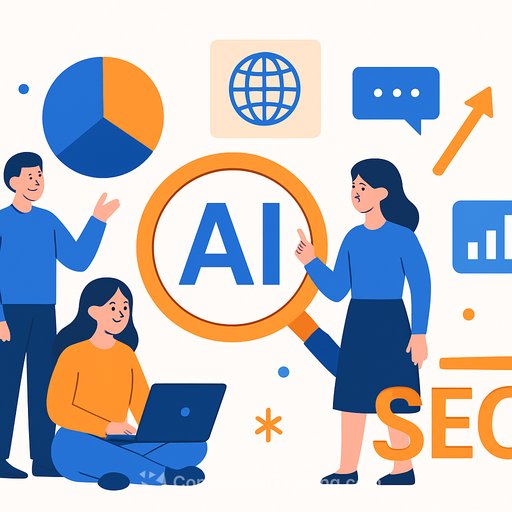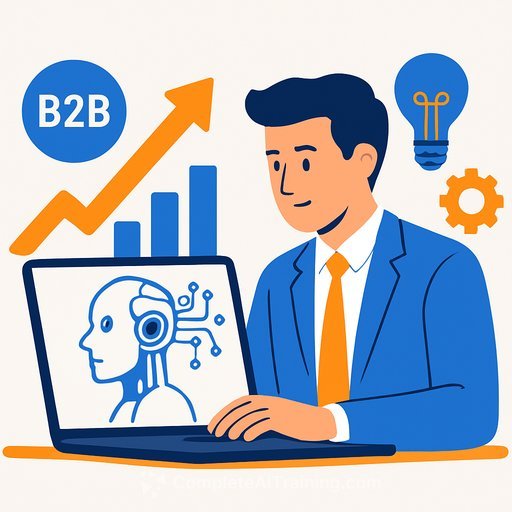AI in marketing: from hype to useful
AI isn't a distant promise. It's a practical tool you can use right now to work smarter, personalise better, and build customer relationships that last.
The teams seeing results aren't waiting for a perfect use case. They're picking real problems, testing small, and stacking quick wins. That's how you get support, budget, and momentum.
Think big. Start small. Prove value.
Anchor your AI strategy to real business goals
Don't start with the tech. Start with the outcome. Pick one priority-loyalty, efficiency, or growth-and let AI support that plan.
Loyalty is a good example. It isn't just discounts. Research on loyalty shows memory, emotion, and social connection matter as much as price or points. People often buy on autopilot because your brand feels familiar and easy, not because they ran a full comparison.
AI helps you stay top-of-mind by delivering the right content at the right time. The result: interactions feel effortless and relevant, which quietly builds habit. If you want a deeper look at what truly drives loyalty, this breakdown is useful: Science of Loyalty.
Practical moves
- Map one target outcome (e.g., increase repeat purchase rate by 10% in Q4).
- List the signals you already collect (purchases, browse history, email engagement).
- Choose one action AI can improve (timing, recommendations, or segmentation).
- Define success upfront (baseline, KPI, decision cadence).
Win early and share it widely
Stakeholders back what they can see. The fastest way to win support is to show a small result, fast.
Start where the ROI is obvious and the risk is low. Two easy entries: automated reporting and predictive targeting.
Quick wins to pilot
- Automate reporting: Turn weekly manual dashboards into AI-generated summaries. Save hours, reduce copy-paste errors, and make insights easier to act on.
- Predictive analytics: Score audiences by likelihood to convert or churn. Shift spend to high-probability segments and pause low-yield channels sooner.
- Subject line and send-time optimisation: Use AI to test variations and schedule by individual open patterns.
- Creative assist: Draft first-pass copy or image concepts to speed up iteration-final judgment stays with your team.
Once you have the numbers, circulate them. Share the before/after, not the theory. A few clean wins build trust fast and open doors for larger pilots.
Personalise with purpose
Personalisation should feel helpful, not creepy. As third-party cookies fade out, your best asset is first-party data-what people click, open, buy, and browse with you.
AI turns those signals into smarter segments and better timing across channels. Same message quality, bigger impact, less manual effort.
How to execute without overcomplicating it
- Tight segments: Group by intent signals (e.g., repeat views of a product category) rather than broad demographics.
- Right-time delivery: Trigger lifecycle emails on meaningful events-first purchase, cart view, reorder window-rather than a fixed calendar.
- Consistent experience: Sync logic across email, site, and app so customers get a steady, relevant experience everywhere.
- Guardrails: Set frequency caps and exclude segments that shouldn't see promos (recent buyers, open complaint cases).
Habitual customers-those who return out of routine-are a quiet growth engine. Consistent, useful personalisation is how you earn that habit.
AI doesn't replace marketers, it amplifies them
AI won't replace creativity, strategy, or empathy. It will make space for them. Every task it automates or pattern it spots gives you more time to think, test, and improve.
Treat AI like a tireless assistant. It surfaces trends you might miss, suggests optimisations you wouldn't try, and handles repeats so your team can focus on the work only humans do well.
A simple 30-60-90 plan
- Days 0-30: Pick one metric and one workflow. Automate reporting. Launch a small subject-line/send-time test. Set baselines.
- Days 31-60: Add predictive scoring for one campaign. Shift 10-20% of budget to high-probability segments. Document results.
- Days 61-90: Roll out triggered lifecycle messages for one journey (onboarding or replenishment). Share outcomes and propose the next pilot.
What to measure (and show)
- Time saved (reporting hours reduced, campaign build time).
- Lift in core metrics (open rate, CTR, conversion rate, repeat purchase rate).
- Spend efficiency (CPA, ROAS, wasted spend reduced).
- Customer health (churn risk, NPS verbatims tied to experience quality).
Bring it all together
Pick a clear goal. Start small. Share wins. Then scale what works. That's how AI moves from a line item to a real advantage.
If you want structured, practical training built for marketers, these resources can help: AI Certification for Marketing Specialists and Courses by Job.
Your membership also unlocks:






